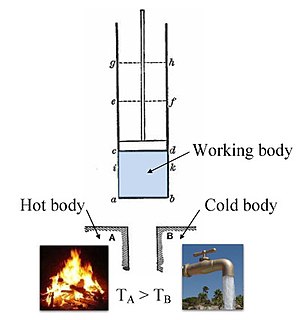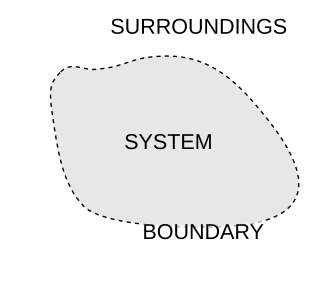Steady state may refer to:
- Steady state (systems) an operating condition in thermodynamic and other systems or processes when variables stay constant as time passes.
- Steady-state economy, an economy made up of a constant population size and a constant stock of physical wealth (capital).
- Steady-state equilibrium (monetary theory), an economic situation where neutrality of money coincides with zero population growth.
- Steady-state rate of growth (neoclassical growth theory), an economy featuring an equi-proportionate increase in capital and labour
- Steady state (electronics), a state existing in a circuit or network when all transients have died away.
- Steady state (chemistry), a central term in chemical kinetics.
- Steady state (biochemistry), regarding ions across cell membranes
- Steady state (physiology), also known as homeostasis, a system in which a particular variable is not changing but energy must be continuously added to maintain this variable constant.
- Steady state (pharmacokinetics)
Neutrality of money is the idea that a change in the stock of money affects only nominal variables in the economy such as prices, wages, and exchange rates, with no effect on real variables, like employment, real GDP, and real consumption. Neutrality of money is an important idea in classical economics and is related to the classical dichotomy. It implies that the central bank does not affect the real economy by creating money. Instead, any increase in the supply of money would be offset by a proportional rise in prices and wages. This assumption underlies some mainstream macroeconomic models. Others like monetarism view money as being neutral only in the long-run.
The Solow–Swan model is an economic model of long-run economic growth set within the framework of neoclassical economics. It attempts to explain long-run economic growth by looking at capital accumulation, labor or population growth, and increases in productivity, commonly referred to as technological progress. At its core is a neoclassical (aggregate) production function, often specified to be of Cobb–Douglas type, which enables the model "to make contact with microeconomics". The model was developed independently by Robert Solow and Trevor Swan in 1956, and superseded the Keynesian Harrod–Domar model.
In electronics, steady state is an equilibrium condition of a circuit or network that occurs as the effects of transients are no longer important.
- Dynamic equilibrium commonly observed in dynamical systems.
In systems theory, a system or a process is in a steady state if the variables which define the behavior of the system or the process are unchanging in time. In continuous time, this means that for those properties p of the system, the partial derivative with respect to time is zero and remains so:

Thermodynamics is the branch of physics that deals with heat and temperature, and their relation to energy, work, radiation, and properties of matter. The behavior of these quantities is governed by the four laws of thermodynamics which convey a quantitative description using measurable macroscopic physical quantities, but may be explained in terms of microscopic constituents by statistical mechanics. Thermodynamics applies to a wide variety of topics in science and engineering, especially physical chemistry, chemical engineering and mechanical engineering, but also in fields as complex as meteorology.

A steady-state economy is an economy made up of a constant stock of physical wealth (capital) and a constant population size. In effect, such an economy does not grow in the course of time. The term usually refers to the national economy of a particular country, but it is also applicable to the economic system of a city, a region, or the entire world. Early in the history of economic thought, classical economist Adam Smith of the 18th century developed the concept of a stationary state of an economy: Smith believed that any national economy in the world would sooner or later settle in a final state of stationarity.
It may also refer to:
- Steady State model, a non-standard cosmological view developed in 1949 by Fred Hoyle and others as an alternative to the Big Bang theory.
- Steady state engine test stand, a type of application for engine testing.
- Microsoft Windows SteadyState, an imaging program for Microsoft operating systems.
An engine test stand is a facility used to develop, characterize and test engines. The facility, often offered as a product to automotive OEMs, allows engine operation in different operating regimes and offers measurement of several physical variables associated with the engine operation.

Windows SteadyState is a discontinued freeware tool developed by Microsoft that gives administrators enhanced options for configuring shared computers, such as hard drive protection and advanced user management. It is primarily designed for use on computers shared by many people, such as internet cafes, schools and libraries.

An operating system (OS) is system software that manages computer hardware and software resources and provides common services for computer programs.
| This disambiguation page lists articles associated with the title Steady state. If an internal link led you here, you may wish to change the link to point directly to the intended article. |



